Saurolophini
Saurolophini is a tribe of saurolophine hadrosaurid native to the Americas and Asia. It includes Saurolophus (from Canada and Mongolia), Augustynolophus (from the United States), and Prosaurolophus (from Alberta, Canada, and Montana, U.S.). Kerberosaurus and Kundurosaurus may also be members.[2] Bonapartesaurus, a hadrosaurid from Argentina, also has been identified as a member of this tribe.[3]
| Saurolophini | |
|---|---|
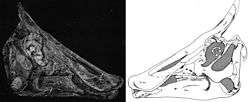 | |
| Photo and interpretive drawing of the holotype skull of Saurolophus osborni | |
| Scientific classification | |
| Kingdom: | Animalia |
| Phylum: | Chordata |
| Clade: | Dinosauria |
| Order: | †Ornithischia |
| Suborder: | †Ornithopoda |
| Family: | †Hadrosauridae |
| Clade: | †Euhadrosauria |
| Subfamily: | †Saurolophinae |
| Tribe: | †Saurolophini Brett-Surman, 1989 |
| Type species | |
| Saurolophus osborni | |
| Genera[1] | |
Fossils of saurolophins have been found in Canada, the United States and Asia, with the North American fossils being older than the Asian, suggesting saurolophins migrated intra-continentally.[1]
References
- Prieto-Márquez, A.; Wagner, J.R. (2013). "A new species of saurolophine hadrosaurid dinosaur from the Late Cretaceous of the Pacific coast of North America". Acta Palaeontologica Polonica. 58 (2): 255–268. doi:10.4202/app.2011.0049.
- Godefroit, P.; Bolotsky, Y. L.; Lauters, P. (2012). Joger, Ulrich (ed.). "A New Saurolophine Dinosaur from the Latest Cretaceous of Far Eastern Russia". PLoS ONE. 7 (5): e36849. doi:10.1371/journal.pone.0036849. PMC 3364265. PMID 22666331.
- Cruzado-Caballero, P.; Powell, J. E. (2017). "Bonapartesaurus rionegrensis, a new hadrosaurine dinosaur from South America: implications for phylogenetic and biogeographic relations with North America". Journal of Vertebrate Paleontology. 37 (In press): 1–16. doi:10.1080/02724634.2017.1289381.
This article is issued from Wikipedia. The text is licensed under Creative Commons - Attribution - Sharealike. Additional terms may apply for the media files.



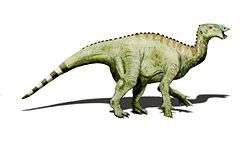
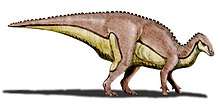
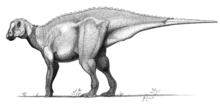
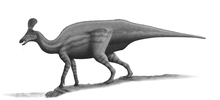
.jpg)